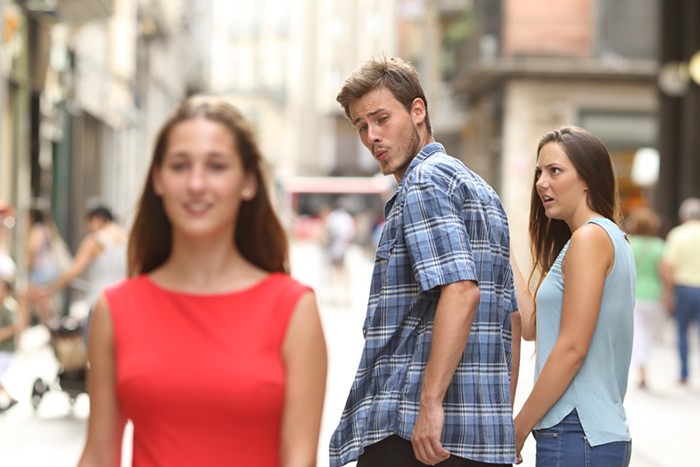Mayor Sam Adams wants to establish Portland as a mecca for young creatives, though as with any idealistic vision—however attainable—Adams' dream Portland has a ways to go before it can become a reality. While we've got plenty of places to display art and Oregon is ranked 11th in the nation for total arts employees, housing is expensive in prominent arts districts, and young creatives will need incentives if Adams wants to keep Portland's fresh minds local.
Milepost 5 (MP5), a nonprofit established by ArtPlace Development (a partnership between Portland Affordable Housing Preservation Trust and Beam Development), is Adams' brainchild, offering "affordable" live-work spaces for artists, musicians, graphic designers, and those often lumped under the umbrella term "creatives." MP5 consists of a building called the Lofts, which opened in June of 2008, and another called the Studios, scheduled to open in August of next year. Future plans include an on-site restaurant and performance space.
MP5 currently offers amenities such as dedicated parking, close access to public transit, and most importantly, a budding community of like-minded artistic types—though several problems remain.
First off, "affordable" is a relative term. Many artists aren't ready to buy a live-work space for $99,995-274,995—and the sales numbers evidence this reality. According to Claire Paris, MP5's real estate agent, there are 54 units in the Lofts and only nine have sold so far, with "one unit occupied by our artist in residence and a few others [leasing] on an interim basis." Ten units in the Lofts are currently being leased, "and those people [leasing] will be transferred to the Studios once they open," says Gavin Shettler, MP5's creative director. The Studios will be rental only, ranging from $200-450 a month (and there is a waiting list 200 people deep).
While affordability is affecting MP5's success, so is its location—at NE 82nd and Holladay, an area known for its hookers and broken windows. The location's semi-nefarious reputation isn't the only drawback. It's farther out than many young creatives want to live, away from popular galleries, music venues, and restaurants—whereas Everett Station Lofts, a similar live-work space, is all location, towering in the epicenter of the First Thursday art walk and the Pearl District.
MP5's attempted solution to the location issue is smart—they let the owners of the condos author their community, augmenting the space to create an area where residents will want to spend time. Paris explains, "The developers have done their best to [avoid prescribing a community] by being as fluid as possible with the development. One [of] the residents really wanted a vegetable garden and the footprint of the property allowed them to create a huge community vegetable garden." Flexibility is part of the mission—but it's going to have to keep bending.
Part of establishing an open-source arts colony is hosting open-source art events—a great way to show potential tenants what MP5 could look like in full swing.
In May of 2008, Chris Haberman, creative director of Portland City Art and curator for Beam Development, curated the art show 30 Rooms at MP5. At the time, MP5 had sold two units. Since then, they've seen new leasers and buyers. According to Shettler, the connection between large-scale arts events and community growth is "one of the reasons why we [host art shows]—to show activity and to create interest. We see a direct correlation."
Haberman is also curating MP5's upcoming festival Manor of Art, featuring upward of 100 artists and 20 bands, running from August 14-23.
"I gave the artists full creative freedom and trust them to create something good," explains Haberman. "I don't know what the show will end up looking like."
The artists involved in Manor of Art display a wide range of mediums and aesthetics—each got their own room in the Studios, an old retirement home—and left to their own devices the possibilities are nearly limitless.
Shettler says Manor is already generating interest in MP5: "Every day there are 50 more hits on the website. As Manor ramps up we have all this activity—I have three to five people signing up on the waiting list for the Studios each day."
Upon exposure to MP5, many artists are ready to ignore its location in order to immerse themselves in its creative community, but, though the most interest is in the rental spaces—"that's where we see the spikes," says Shettler—there are no plans to convert units in the Lofts to permanent rentals, and the Studios are still a year out from opening their doors. So while Manor of Art may prove a tantalizing introduction to the community, artists interested in MP5's most affordable housing options will just have to wait.
INSIDE THE MANOR OF ART
Gabriel Liston's room at Manor has a grandma's-attic vibe: a comfy-looking broken chair stands by a table that's covered in antique books; an old doll and a set of kiddie skis sit next to a bookshelf, while Liston's paintings are almost lost in this foreground clutter. Liston's work has a children's-book quality—circa Blueberries for Sal or The Snowman—though subtleties add quick depth. In one piece, a boy holds his hand against the sky. Upon a closer look, the boy is actually plucking a cloud from the atmosphere, forcing the viewer to notice a dry-brush technique that renders portions of his shirt and arm transparent. The boy is dotted with patches of blue, as if being absorbed into the heavens. Many of Liston's works confront substance—the unholdable held, the solid giving into its inevitable deconstruction—communicating an impermanence and the organic confluence between human and landscape.
Richard Schemmerer is all over Manor. Not only does he have his own room—Room 257, tentatively titled Drawing from out side of the line—but he is also co-curating a group room with Haberman, titled Alter Nation, which displays a series of altars. The altars created by Schemmerer are 3D collages, constructed with just about anything he could get his hands on. For one altar, Schemmerer positioned a dozen or so mirrors along the wall and floor, arranging them into a backdrop and pyre-ish shape. Dividing the mirrors into multiple planes, stacks of masks, paintings, stained glass, beads, and other objects are formed into tidy columns. At the top of the piece, a doll head is found within a circular mishmash of colored glass, wings rising from these center elements. Compounded with the title of the room, Schemmerer's altars make gods of strangeness and abstraction, celebrating our political freedom of expression outside of constraint—when the onlooker sees multiples of their own image trapped in Schemmerer's assemblages, they are forced to examine their relationship with freedom.
Gary Wiseman and Meredith Andrews, a self-described "collaborative team in life and work," were the artists in residence at MP5 from March to May of 2009. They've come back to create a yet-to-be-titled installation for Manor, incorporating materials found in the building along with video and architectural components. Wiseman explains the project as "a film set turned inside out [with] the surface and the support infrastructure exposed to the viewer," which the duo intends as a symbol for "the internal construction of self." While some artists scoff at MP5's location, Wiseman says, "The only thing that would prevent us from going back to live at MP5 are the ghosts."
Another artist who feels the presence of past tenants from the Studios' retirement-home era is Nicole Linde, whose paintings have an entheogenic quality similar to Alex Grey's iconic works. Linde will display paintings, as well as site-specific murals that she is painting on and around the doors of her room.
"When I first sat in my room I felt the energy of older people living there, and often times this was right before the final days of their life," says Linde, who continues by explaining that she "wanted to paint the idea that these doors were portals to unknown worlds." One such door displays hive, floral, and vine patterns streaming from a person's head. Above the door, synaptic patterns spill down the wall in rainbow-colored gradients.
Possibly the most fitting show for an old retirement home, Marian Spadone is displaying her biodegradable burial shrouds and caskets. Using two rooms and the connecting hallway, Spadone takes on death as a transition, "using organic materials to create a quiet, earthy meditative environment in the first room [while the] hallway will feature a lighter tone, [leading] to a room that suggests how a 'home funeral' might play out." While many artists take on death and the spiritual, Spadone does so directly, without hesitation, bringing calmness to the transition.
While visual art is the bulk of Manor, music and performance aren't overlooked. Bands will play throughout both weekends of the event, including Boy Eats Drum Machine, Jeffrey Jerusalem, Atole, Chores, Blue Skies for Black Hearts, and Church. Church plays the first Saturday night (August 15). Their coming-of-age show at this year's PDX Pop Now!, with the addition of a horn section, illustrated just how much their music has matured recently; electric pianos twinkled and lingered between war drums, cavernous guitar balladry, and lyrics like, "We'll drink champagne in heaven when we die," which left gorgeous yet uncomfortable visceral impressions.
On Wednesday, August 19, and Thursday, August 20, the Risk/Reward New Performance Series is going down. Both nights will feature 20-minute pieces by Joe von Appen (dark, comedic monologues), Angela Fair (performing Hot Live Action—more monologues), Faith Helma (performing a sound-based piece, Undine), and Hand2Mouth Theatre.













